¡Ay, Caramba! It's Cartoon Time
Collection of humourous cartoons with sign painting, lettering, type, and calligraphic themes.
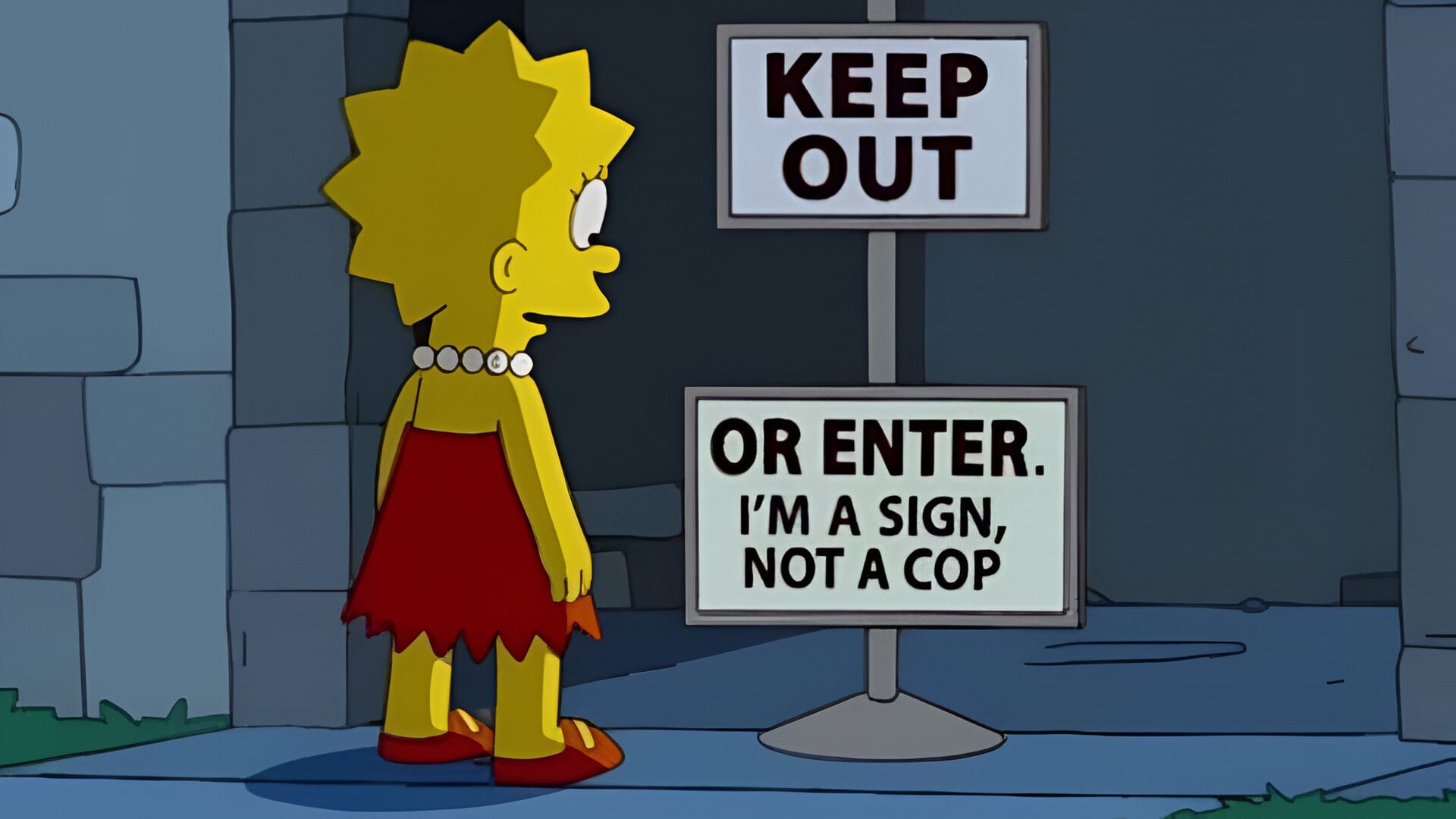
The forthcoming European premiere of Married to Comics prompted me to go through my digital scrapbook of sign painting and lettering cartoons. And to seek out some new material.
So, with a nod to what is sometimes called the 'silly season', I hope that some of these provoke a smile and a chuckle as you browse through them.

Prehistoric Painting
We all know that sign painting is the second oldest profession in the world, no doubt because it satisfies our innate desire to make a mark on the world.
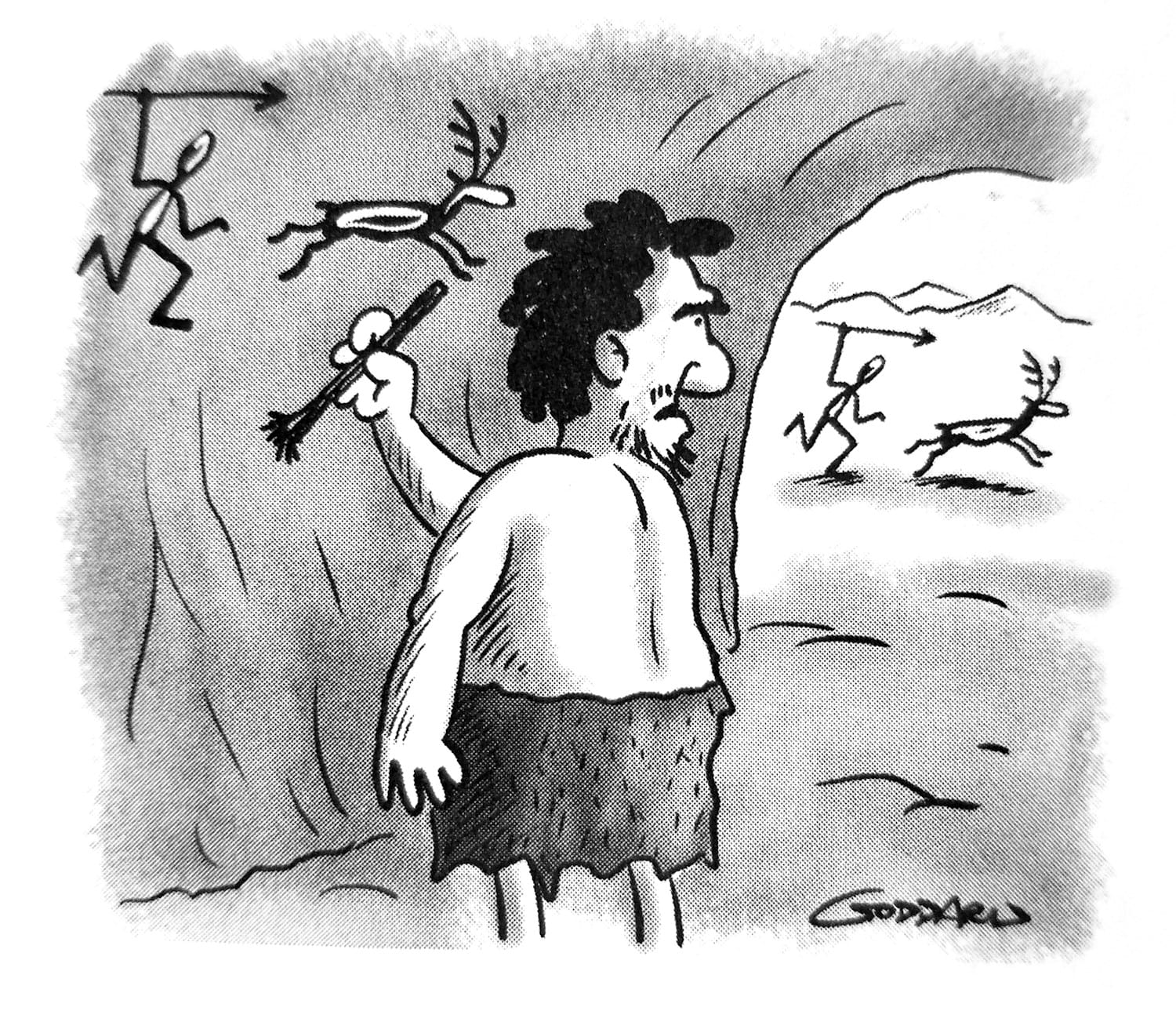
And this is an insight into the lettering that lies beneath the stones.

A Sign of No Business
It was many years later that these painterly efforts were put to commercial use, and the vocation of sign painter came into being. The cartoonist E.C. Segar, of Popeye fame, explored the commercial imperative for signs in this 1922 Thimble Theater sketch.
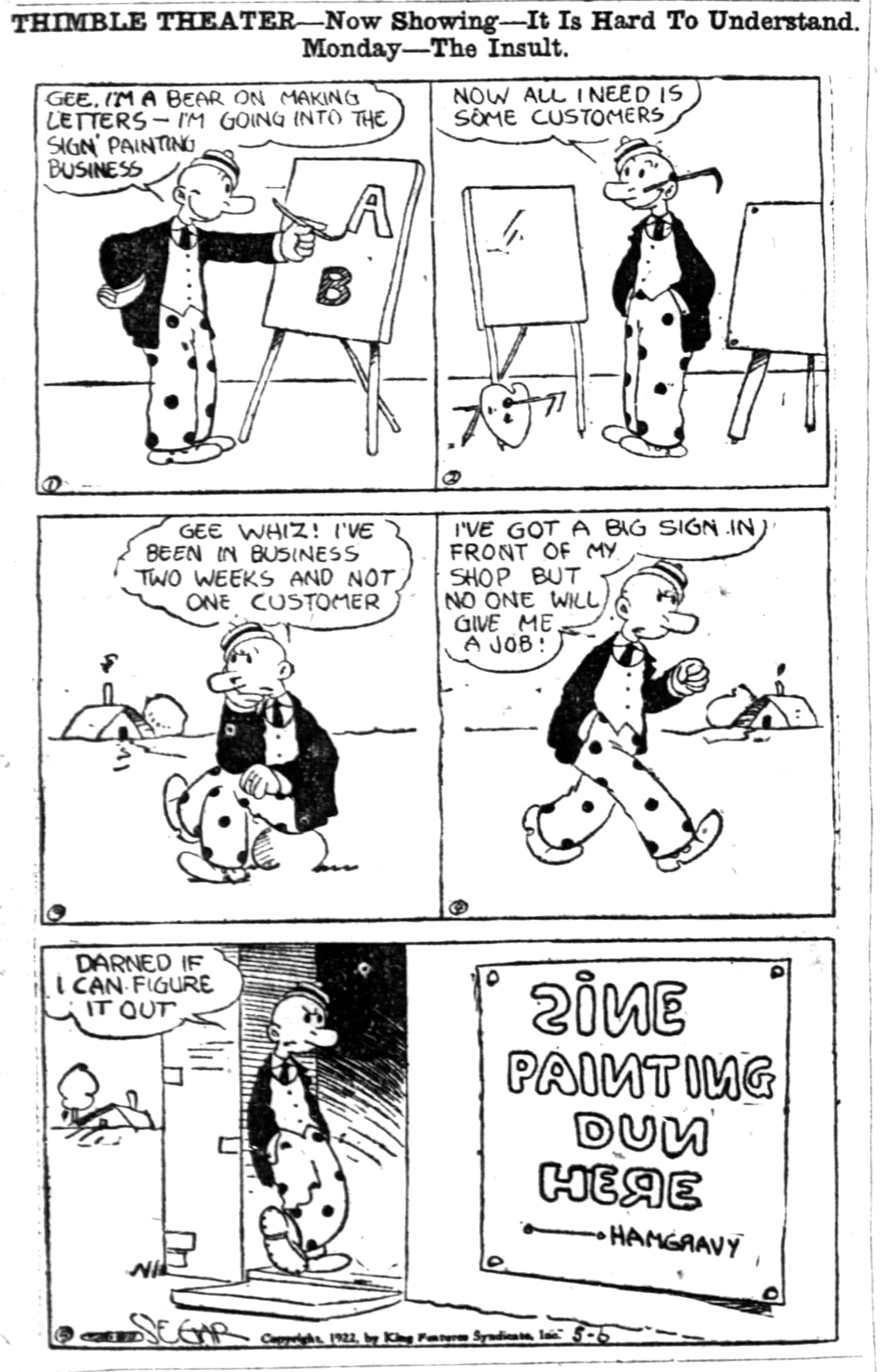
And beware the "nephew who is a hippie artist": buy cheap, buy twice.
![Sketch titled 'Nephew Art' with the following handwritten text: Nephew Art is like this: Harry is in the plumbing business and owns a truck. One day, over a beer, he says to his friend Fred, "Fred, I figured it would be real nice to have a sign painted on the side of my truck... maybe a happy plumber or some tools, or like that, but I went to a sign painter and he wanted four hundred dollars, which is too much for me!" So Fred says, "Don't worry about it. I got a nephew who is a hippie artist and he will do it for twenty dollars. I'll call him up right away!" So the nephew comes over and paints the sign, and it is Nephew Art, and looks like this: [There is an illustration of a badly done sign showing a plumber holding a toilet and a spanner with lettering that is a mixture of upper- and lower-case with dripping paint, and a line of hippie flowers along the bottom.] The text continues: Nephew Art is not limited to sign painting, nor does the nephew have to be male (or even a nephew) but the effect is the same, and can be seen in many areas of our lives—carpentry, music, advertising, poetry, etc. In fact, two of America's biggest businesses, television and politics, are heavily dependent on nephews of one kind or another.](https://bl.ag/content/images/2024/07/Sign-Painting-Nephew-Art.jpg)
The importance of signs to business was also the topic of a 1925 Signs of the Times article, 'Signs: The Untiring Force Which Keeps the Wheels of Progress Turning', accompanied by this illustration.
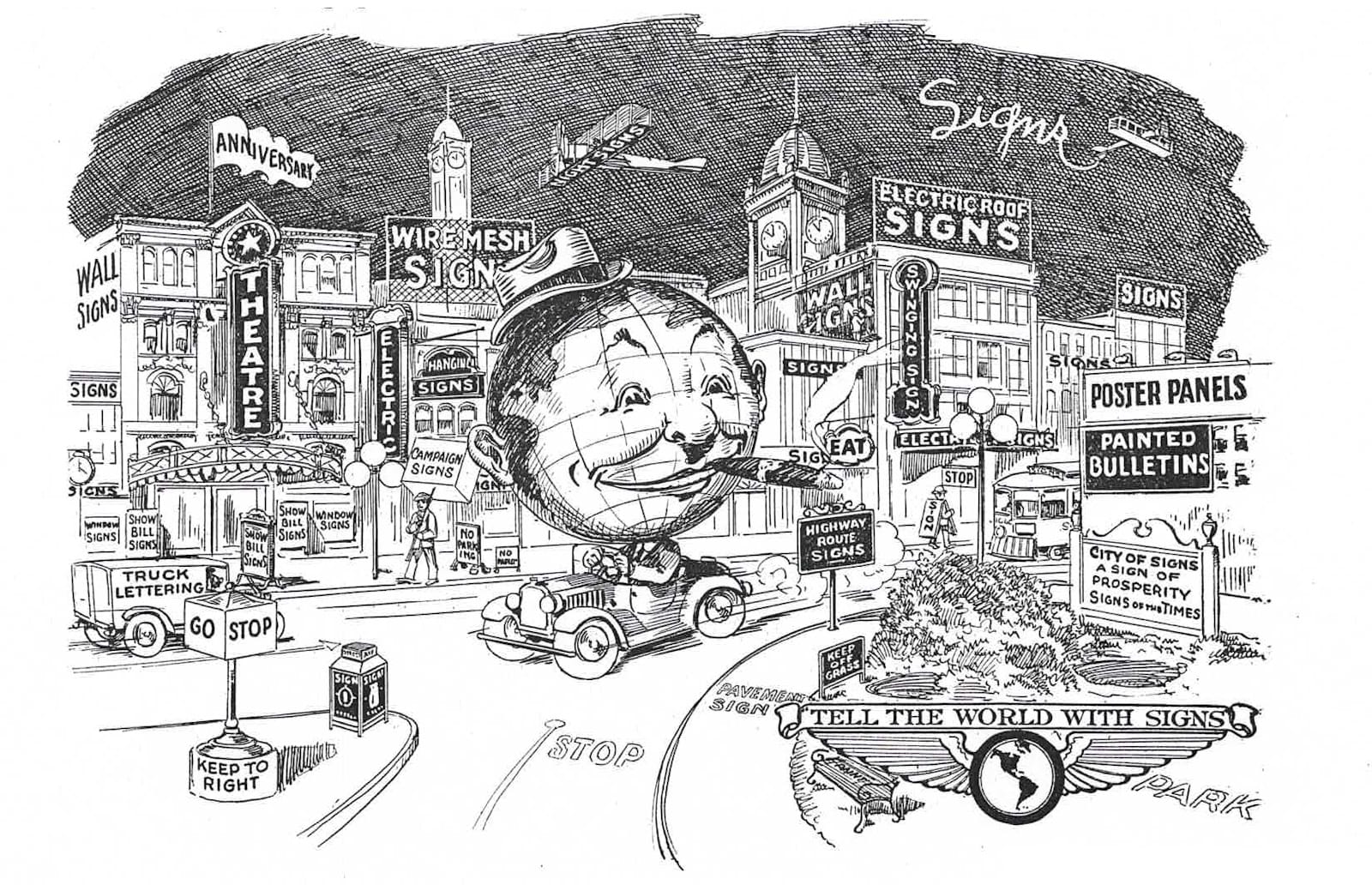
That image of signs of all kinds in every imaginable position was foretold by Winsor McCay.

Hot Off the Press
Cartoons have been a mainstay of the sign painting press, and these are just a couple from The Journal of Decorative Art, published by the National Association of Master House Painters of England and Wales.
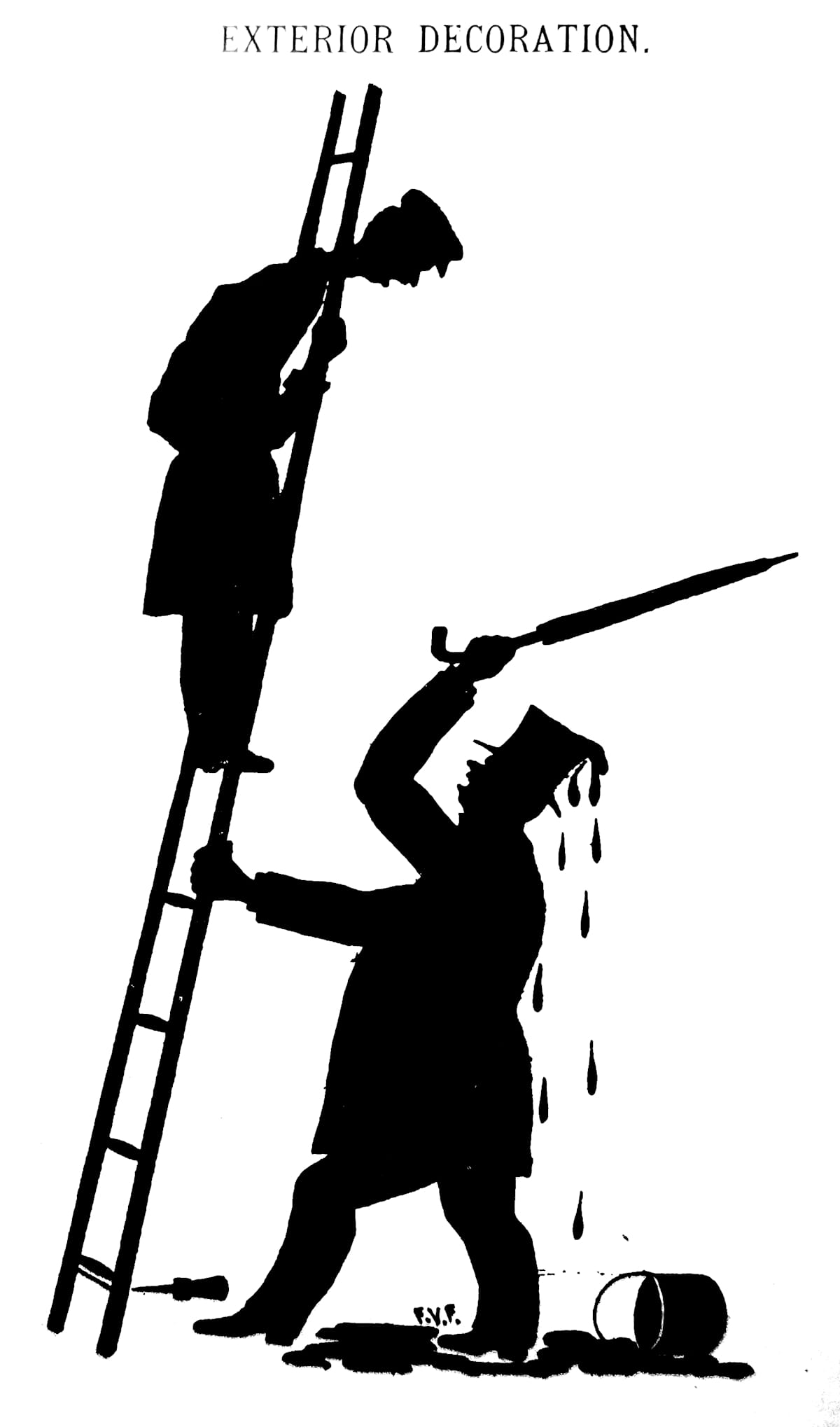
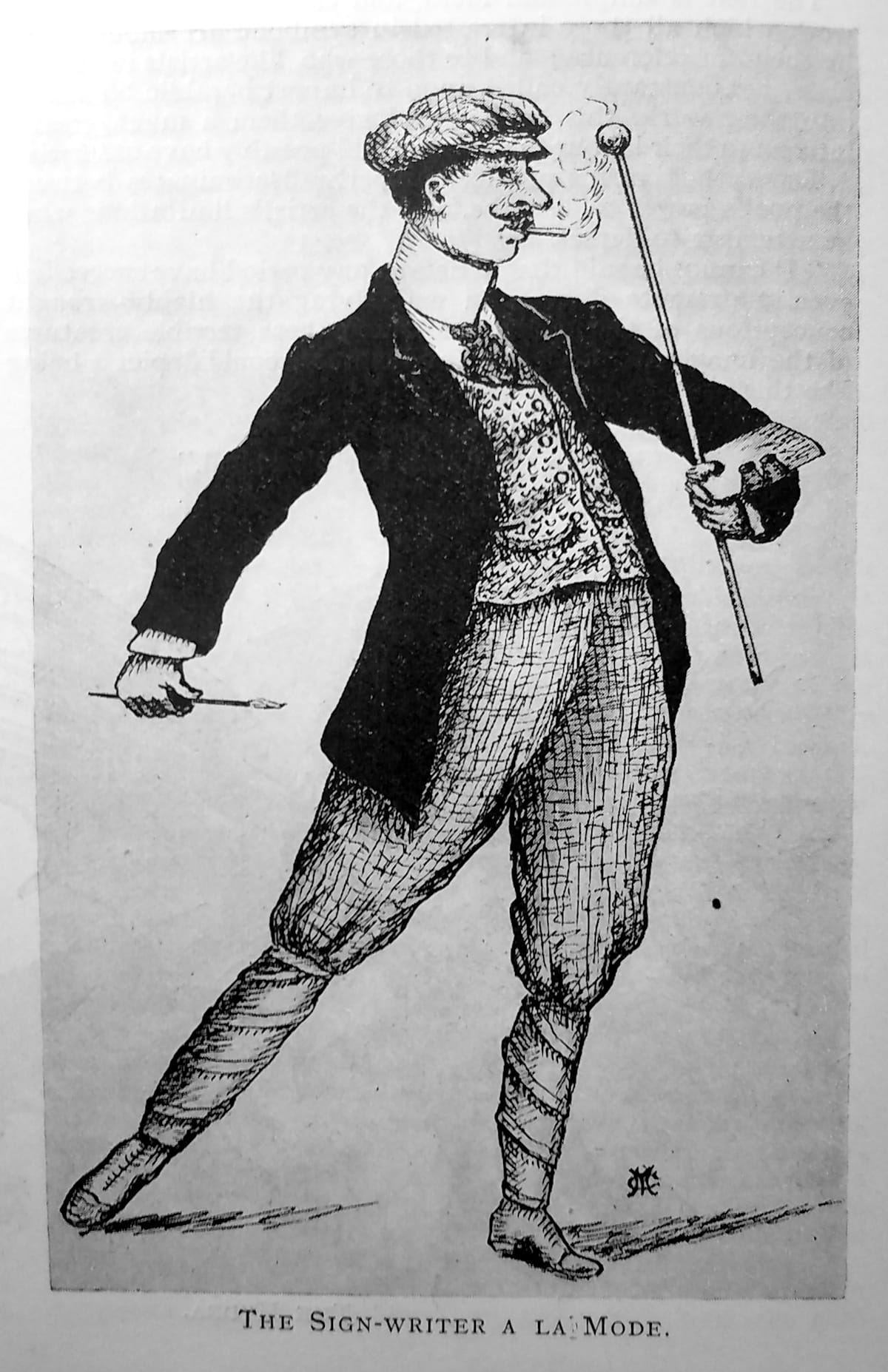
'External Decoration' (1904) and 'The Sign-writer a la Mode' (1906) from The Journal of Decorative Art.
Across the pond, H.F. Voorhees contributed to Signs of the Times between 1920–1934, which included his Shop Talk strip.
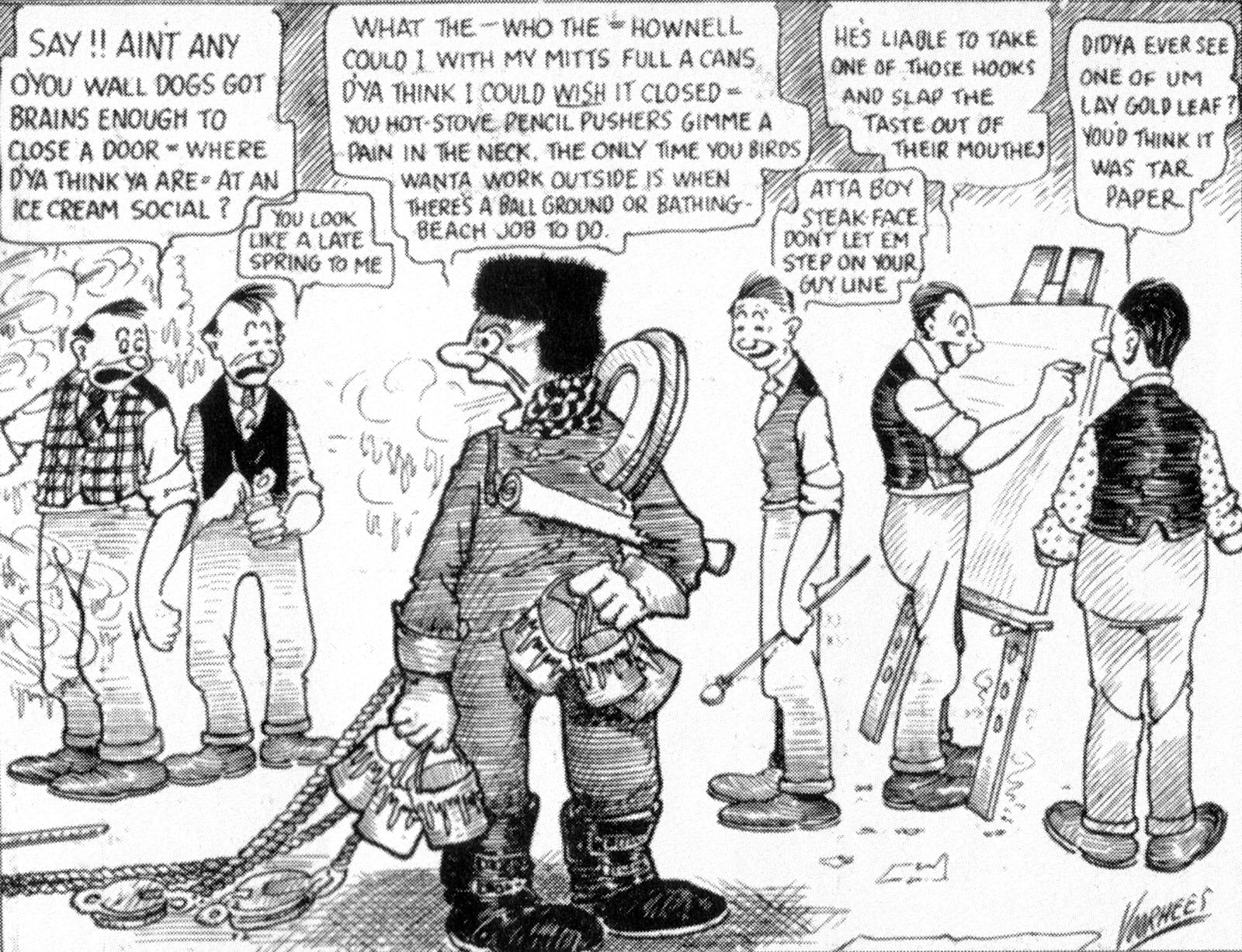
From 1987, Signs of the Times ran Justin Green's Sign Game, and a collection of these was later published in a book.

Green's other sign-painterly series was Signscape.

And, in SignCraft, the two mainstays of the publication's cartoons were Duwayne Rickerd and Bob Parsons.
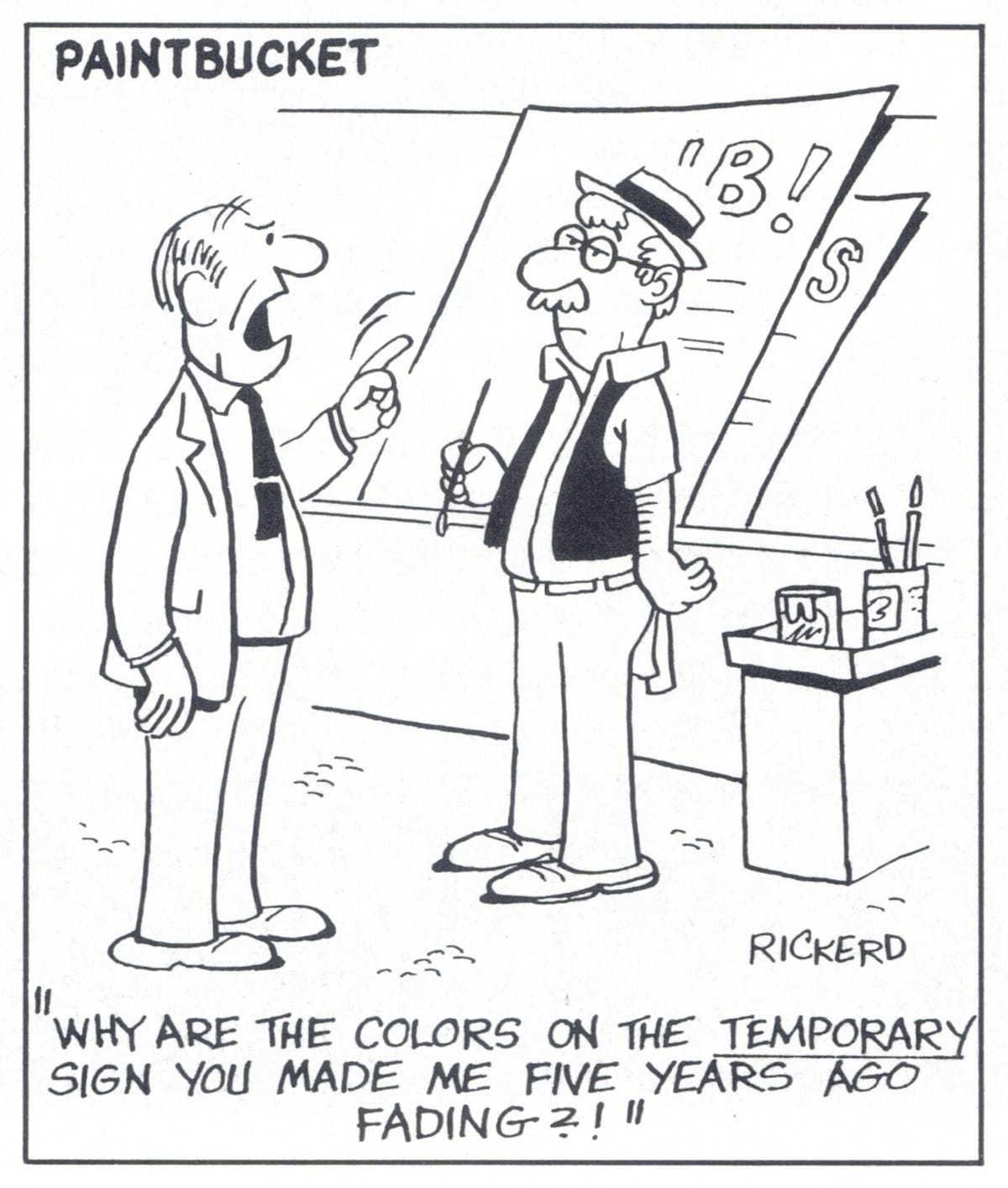

Two of Duwayne Rickerd's cartoons from the September/October 1986 issue of SignCraft.
Bob Parsons' work was later published as a book, with ten years of SignCraft cartoons inside.
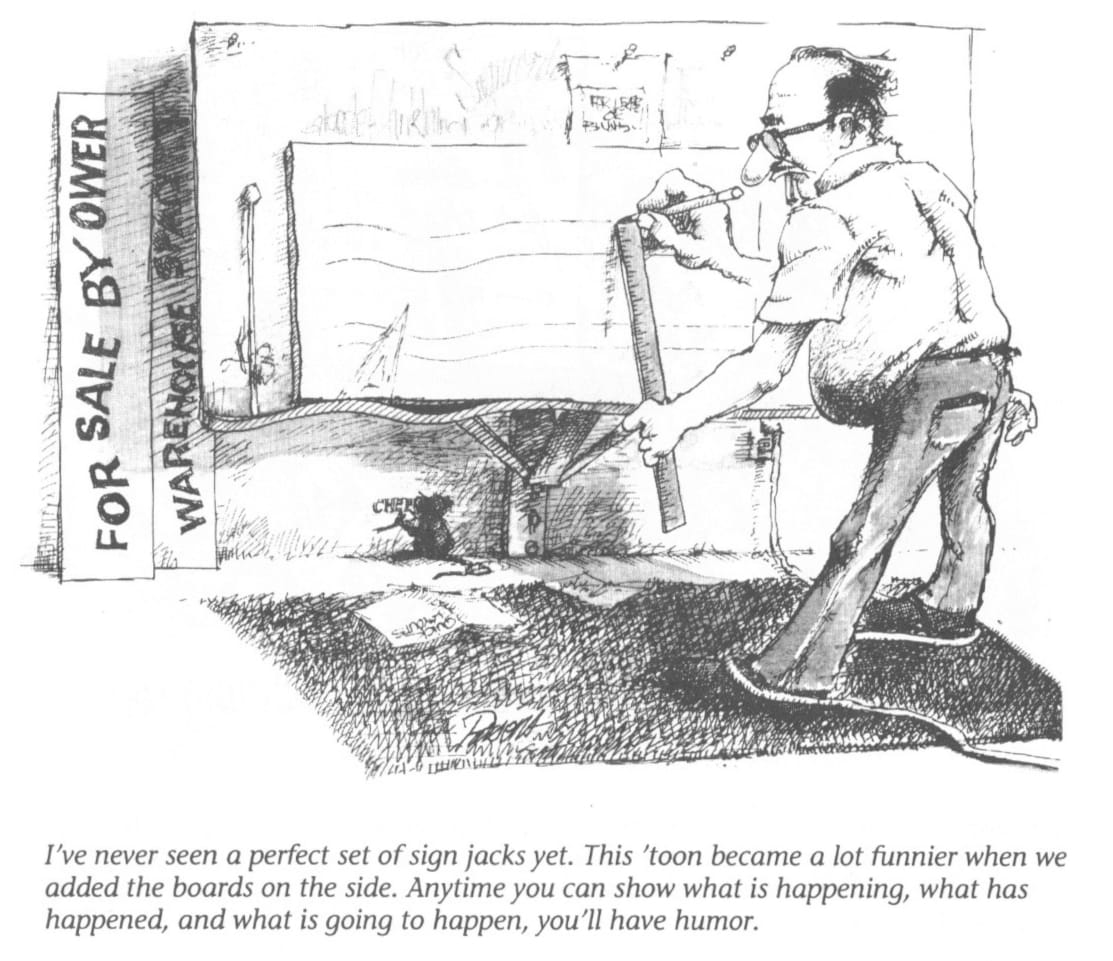
The Winter 1983 issue of SignCraft carried a piece profiling Duwayne Rickerd and Bob Parsons. Editor Tom McIltrot has kindly allowed me to share it here as a PDF, which of course contains more of these men's work.
Also in book form, and filled with sign painting humour, there's Magnus and the Roman Letters by David Kynaston (featured in BLAG 02) and the various illustrated interpretations of The Legend of Slappy Hooper.


Hot sign painting from The Legend of Slappy Hooper by Aaron Shepard and Tony Goffe, and a piece of history in the making from David Kynaston's Magnus and the Roman Letters.
Another Origin of the Serif Story
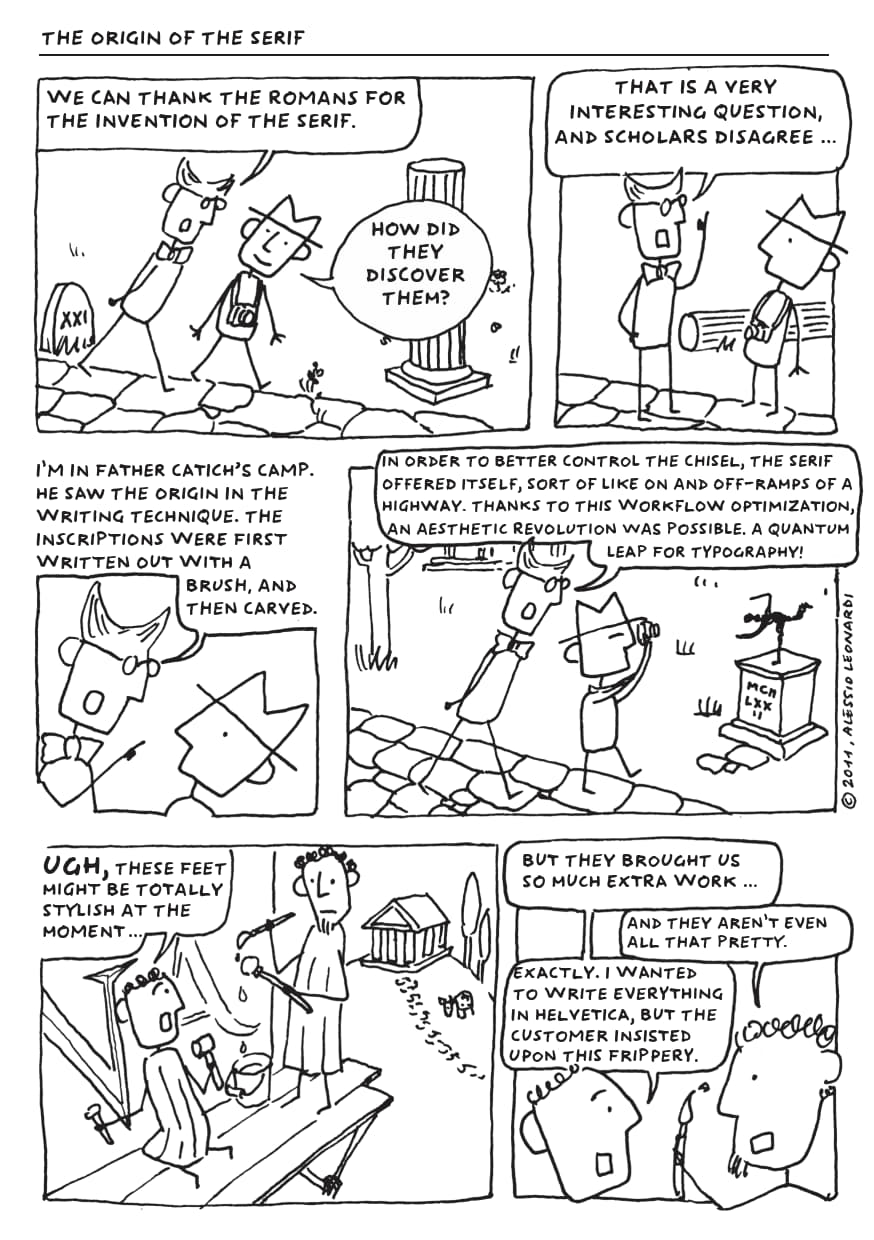
And, of course, there are cartoons in BLAG; here are a couple from the first two issues.
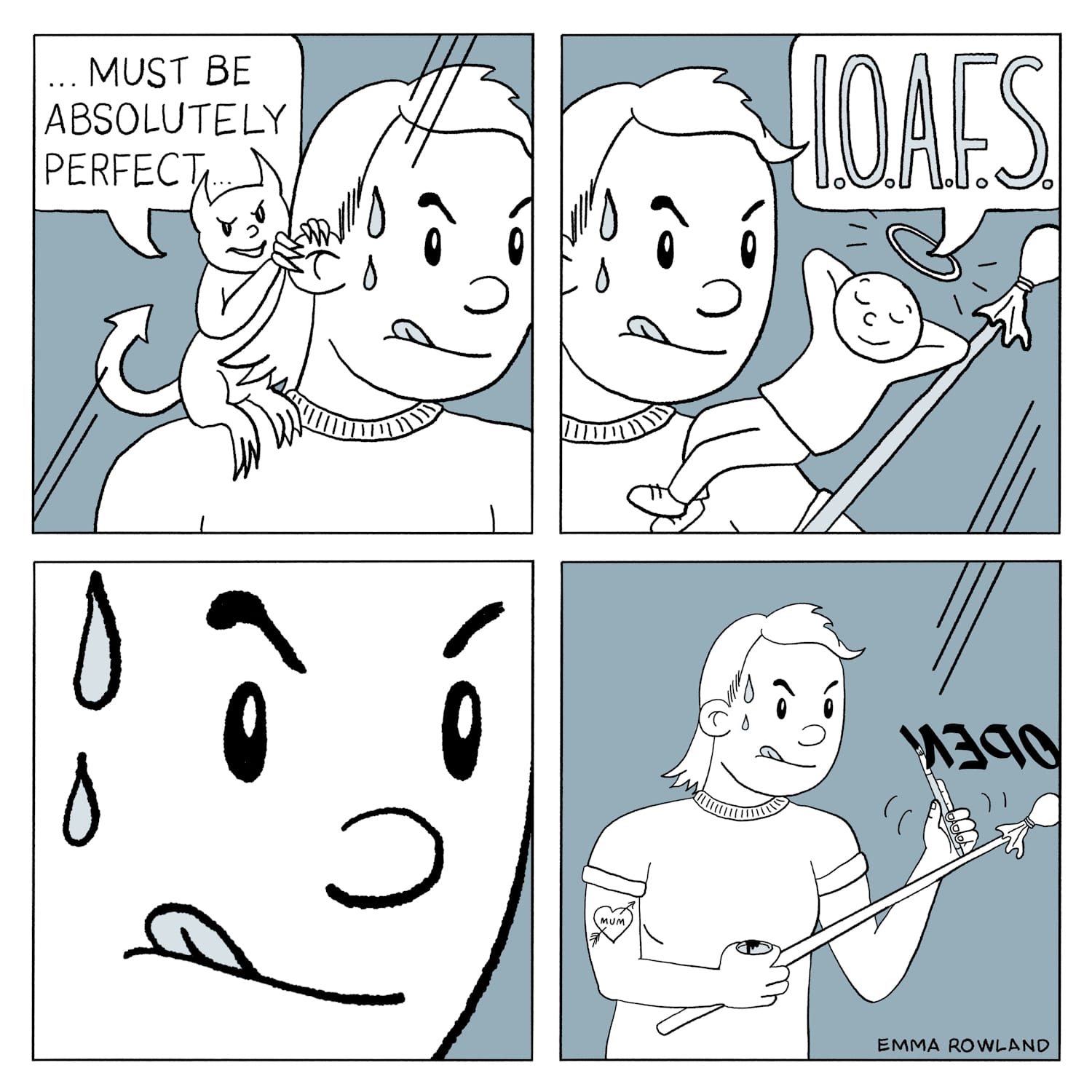
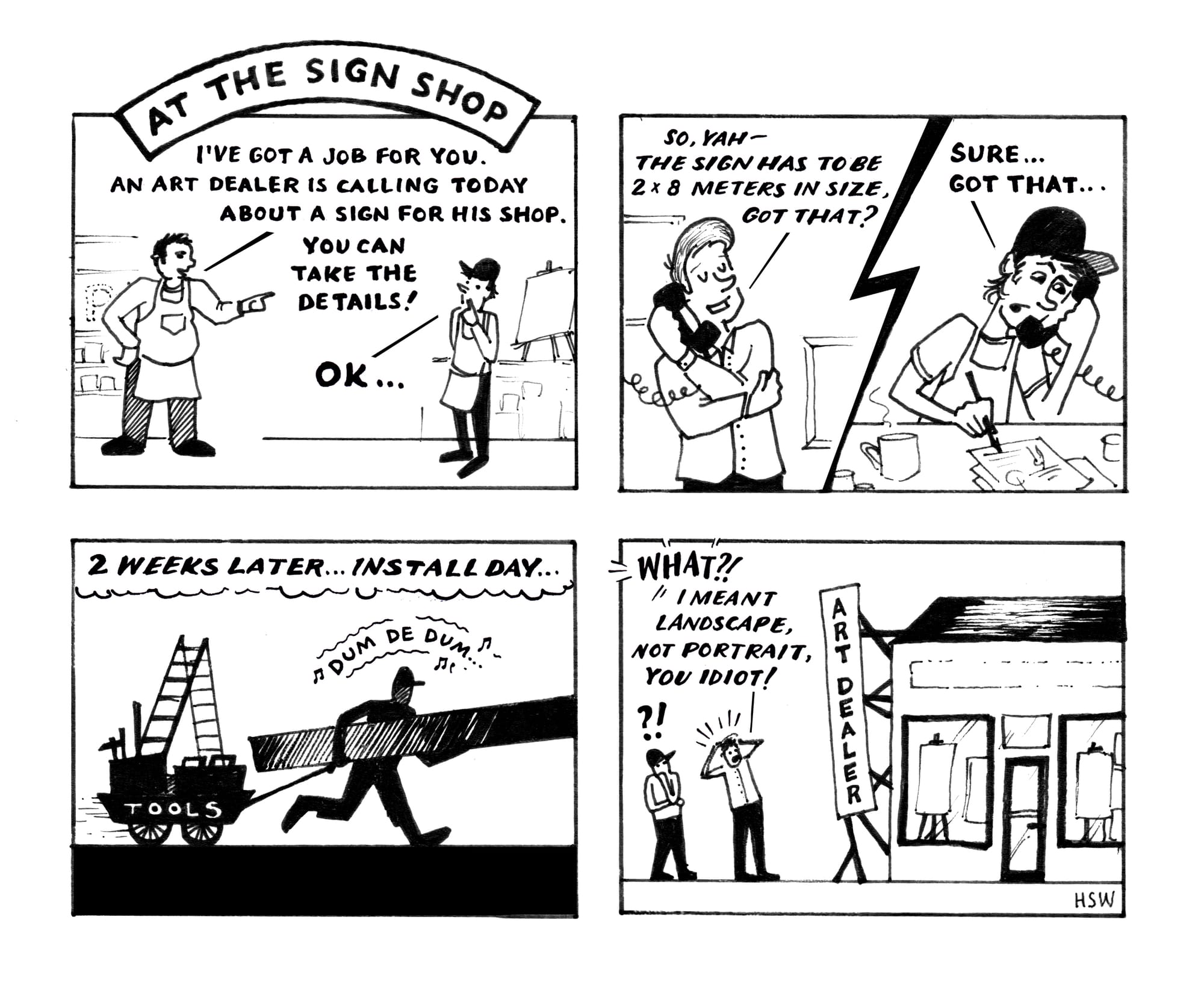
Solid as a Rock(well)
The American artist Norman Rockwell was prolific in his editorial work, and these pieces sometimes featured sign painterly subjects.
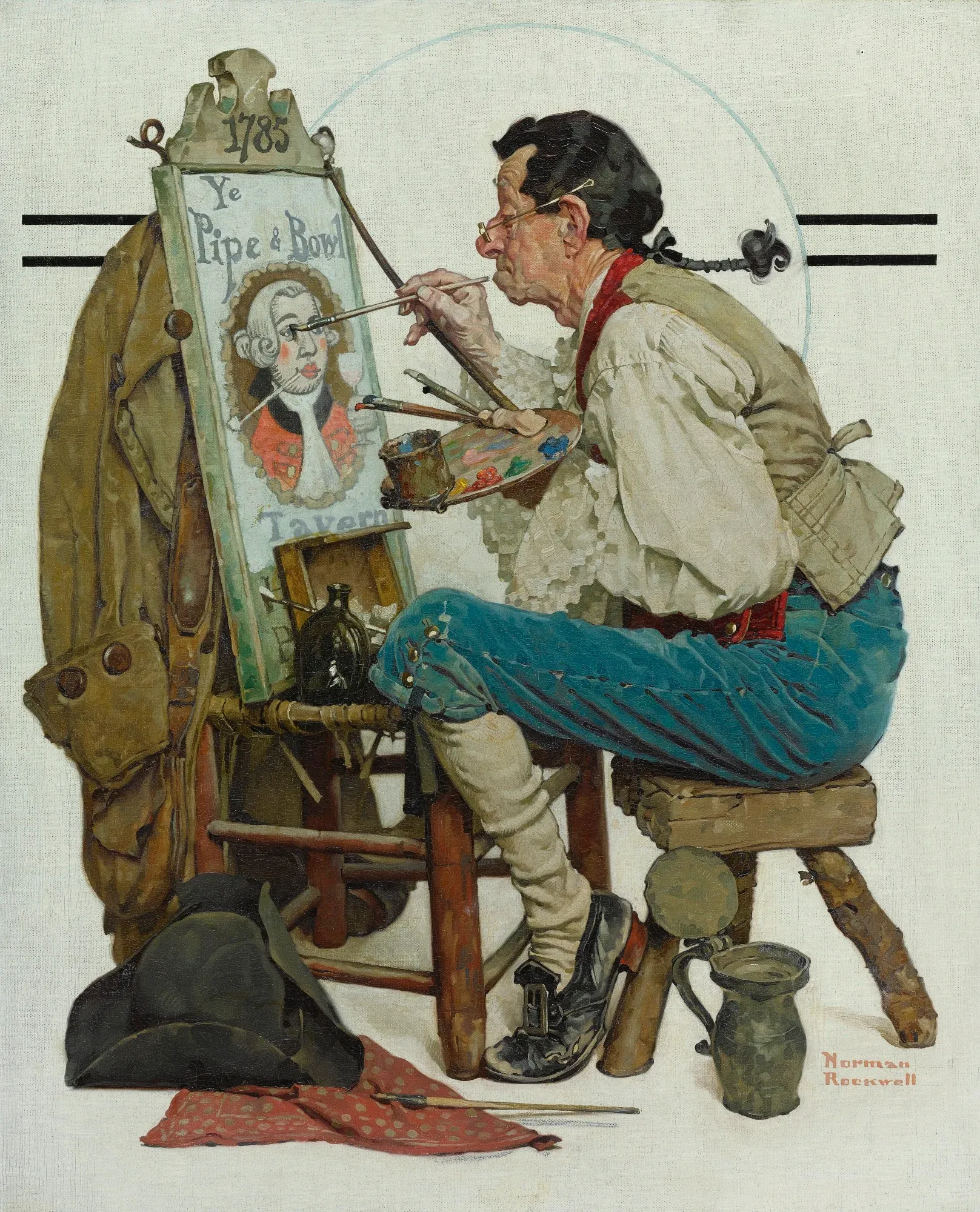
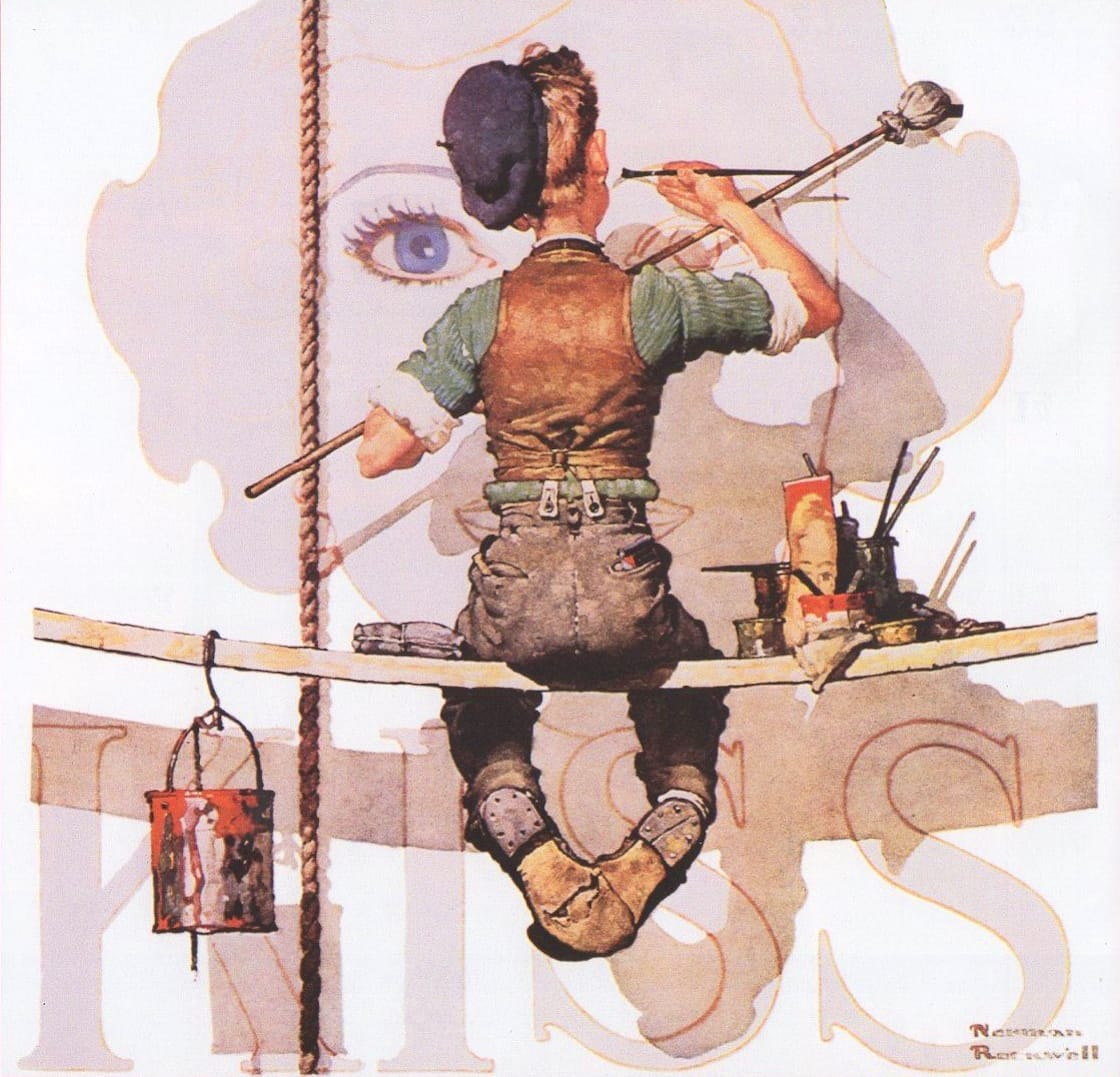
'Pipe & Bowl' (left) was painted by Norman Rockwell in 1926. The other piece featured on the cover of The Saturday Evening Post on 9th February 1935.
The Far Side
Gary Larson's work regularly contains sign and sign painting themes, but the licensing department is currently closed. Here are links to three that I particularly like:
Tools of the Trade
A good worker never blames their tools, but they can be the butt of jokes. Or the focus of profound insight.
Brushes in Peril
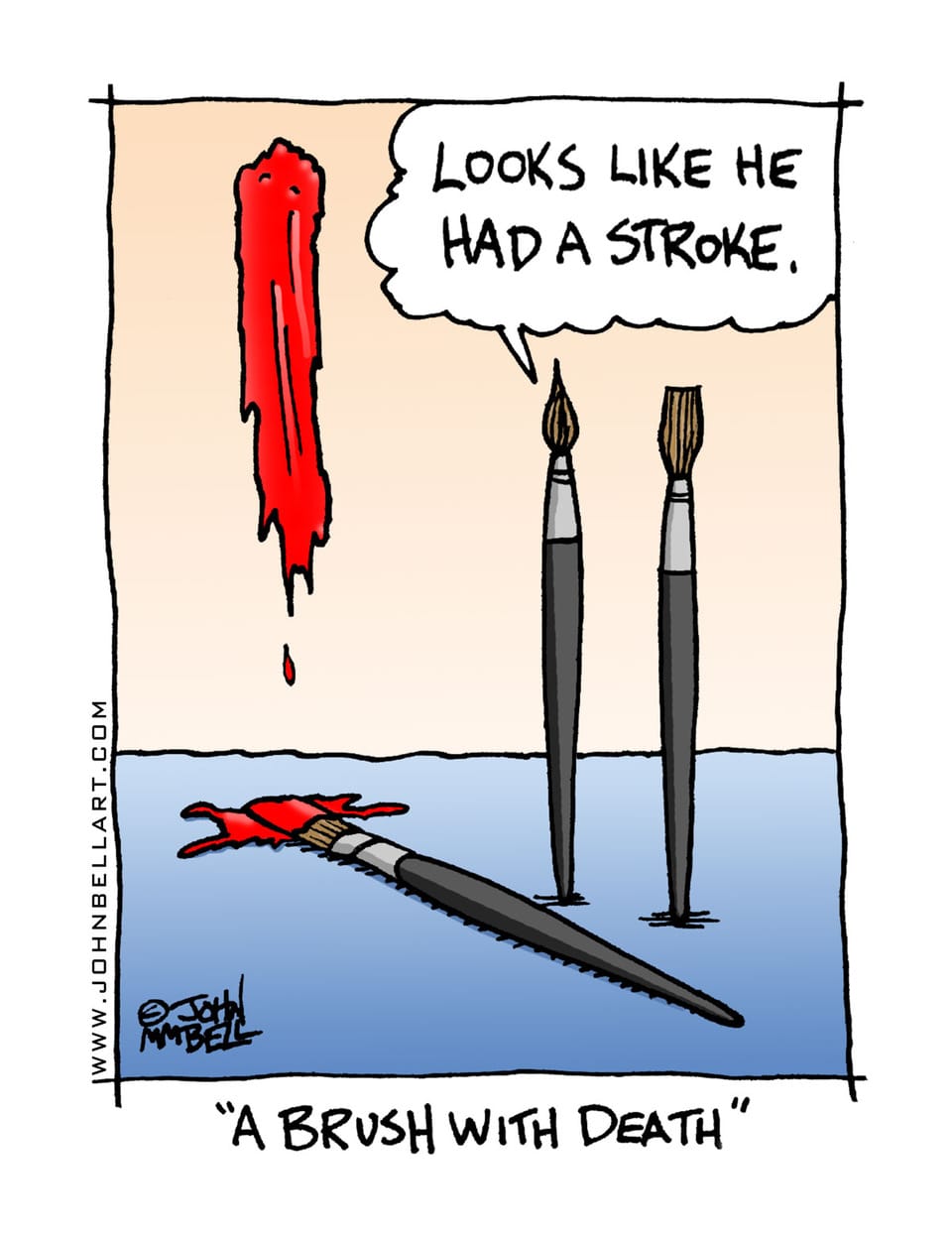

'Brush Stroke' by John Bell, and an interrogation by William Krupinski for Mack Brush in 2002.
Colours in Conflict

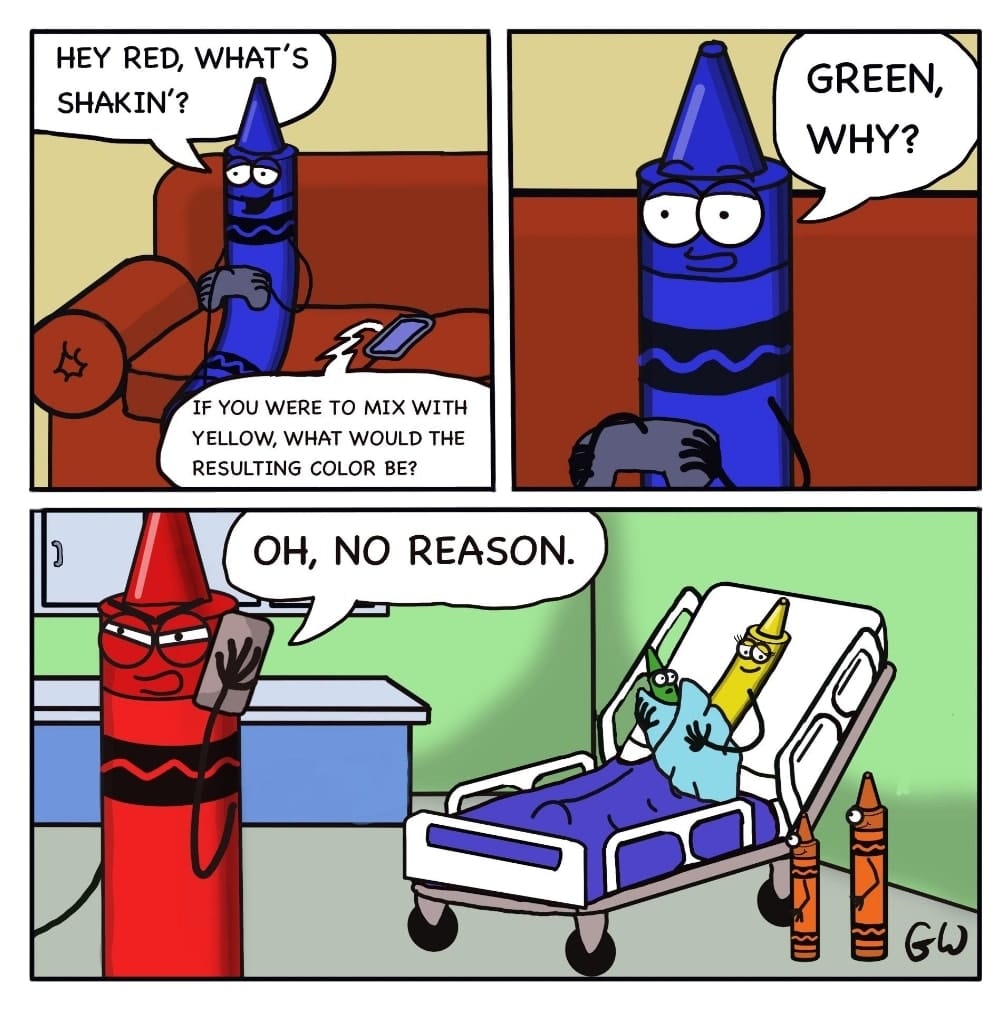
Wise Words
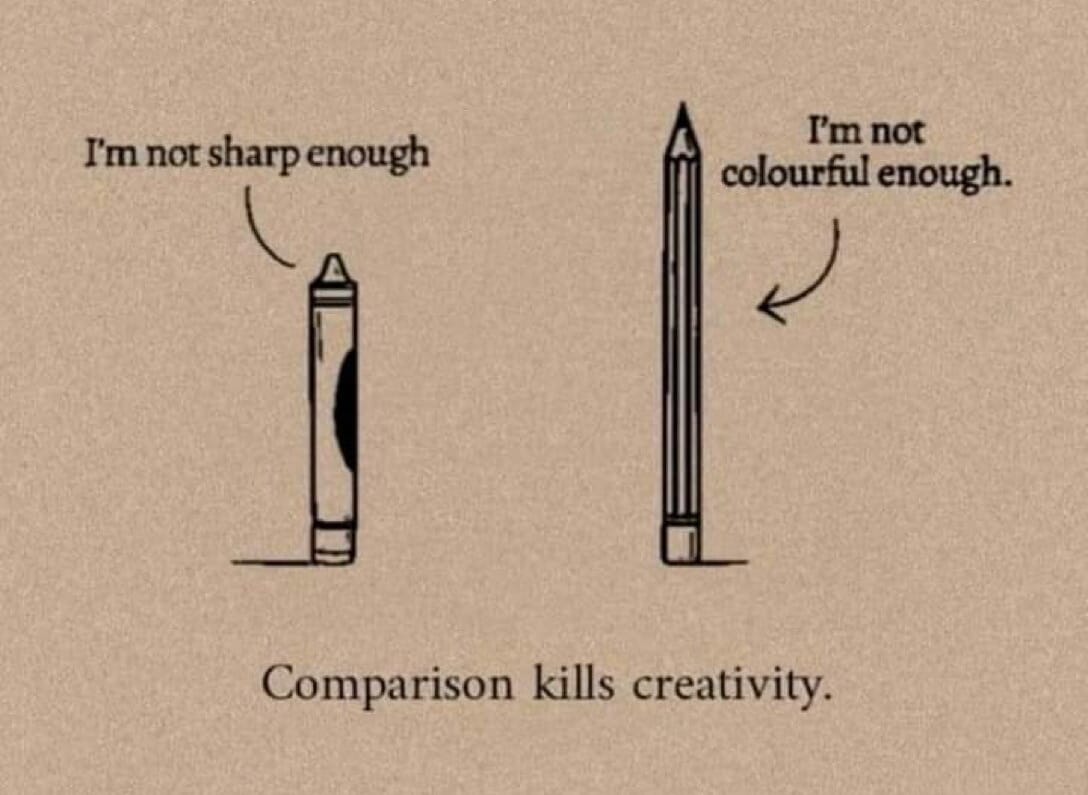
You Spelled It Wrong!
It's a cliché, but it does happen!


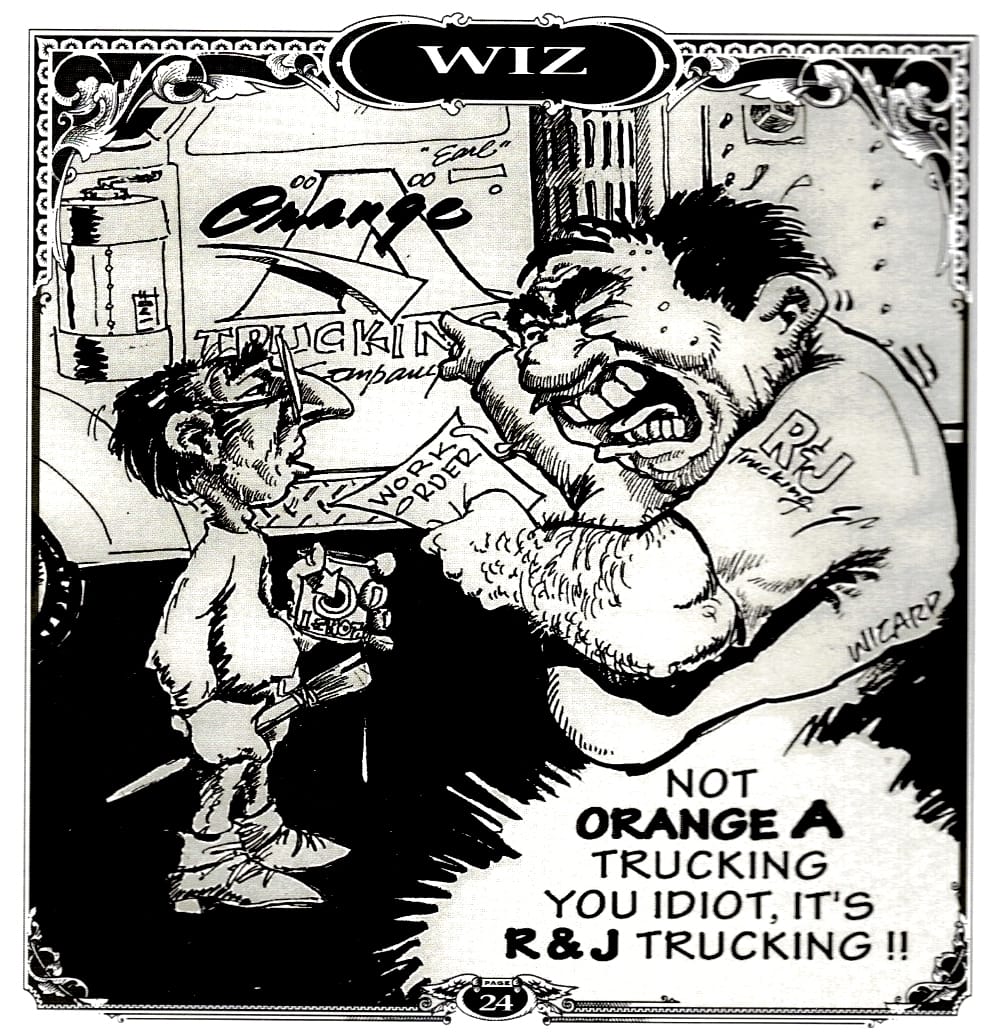
'R & J Trucking' by Wizard in A Magazine About Letterheads, 1997.
Word play can also extend to entire slogans.
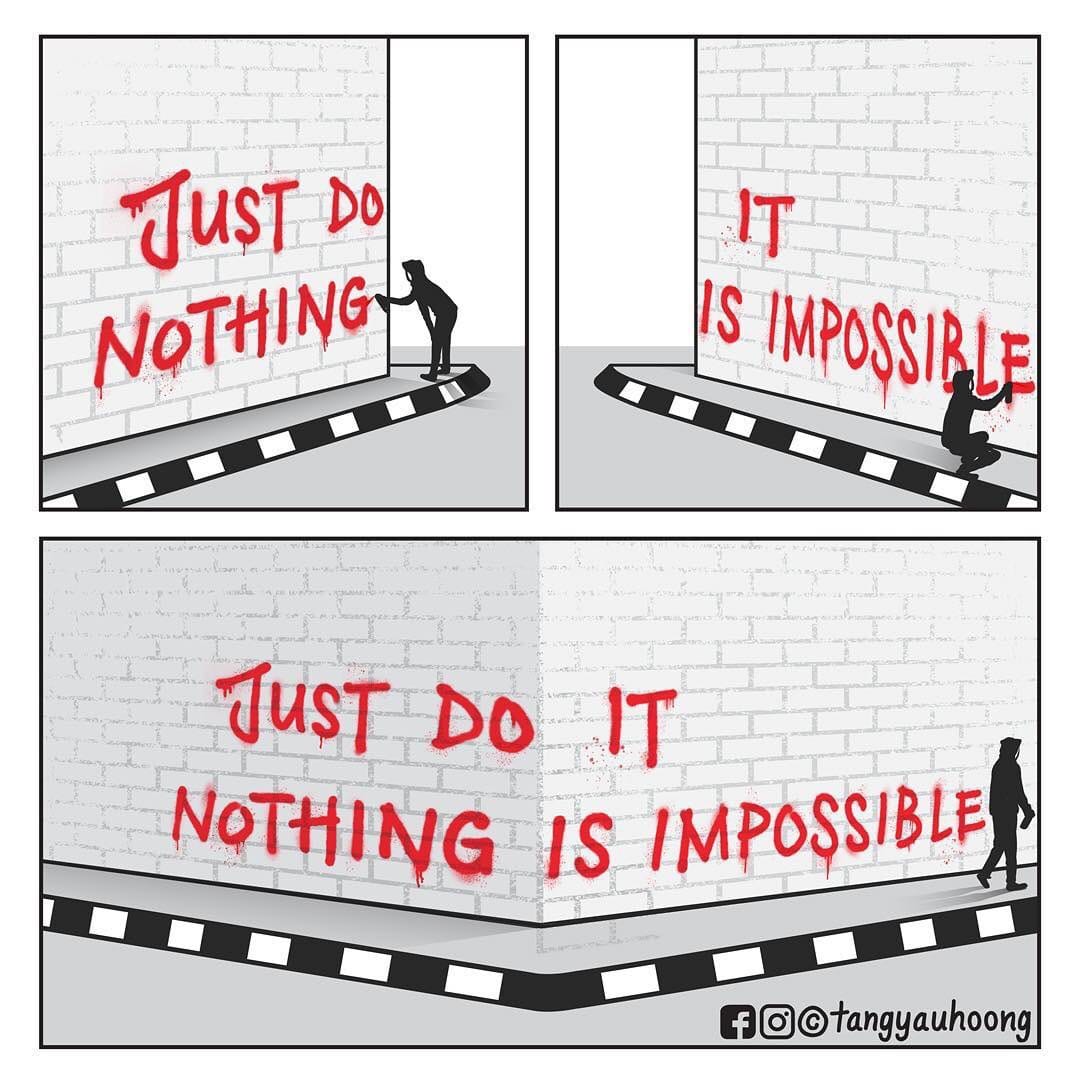
And then there's the profanity and political incorrectness that was Mr Tourette — Master Signwriter, from Modern Toss.
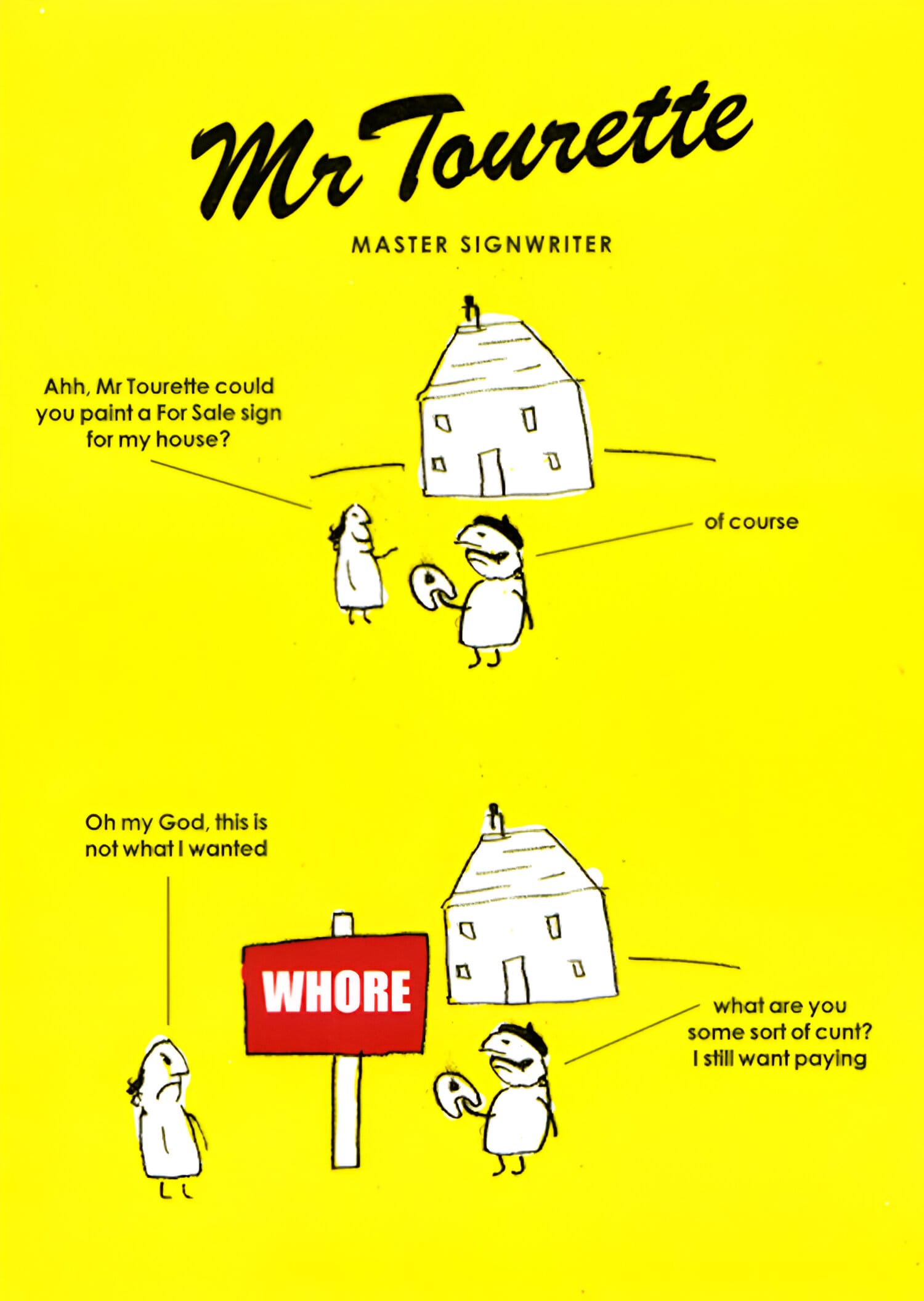
Many of the cartoons were also animated into short sketches for the television series.
Mr Tourette — Episode Two on YouTube.
Just My Type
And, for a little detour from the main theme, here are some sketches with more typographic leanings.

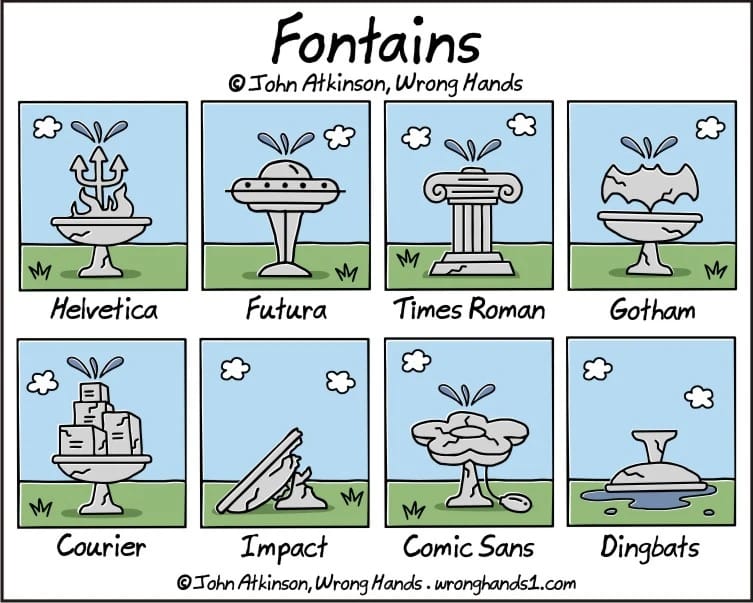
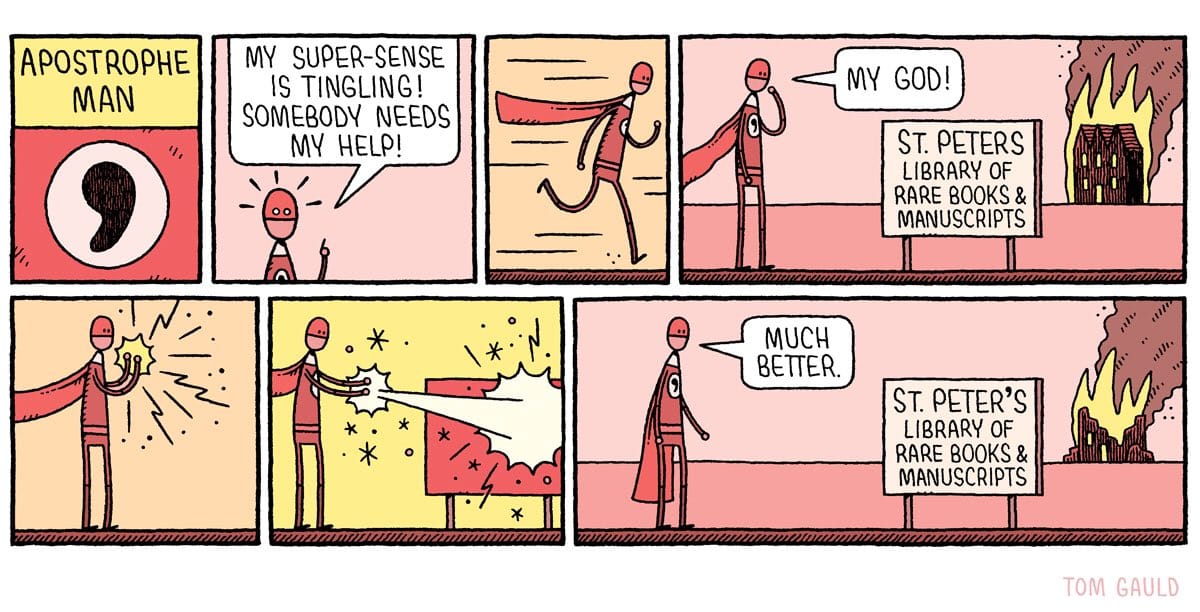
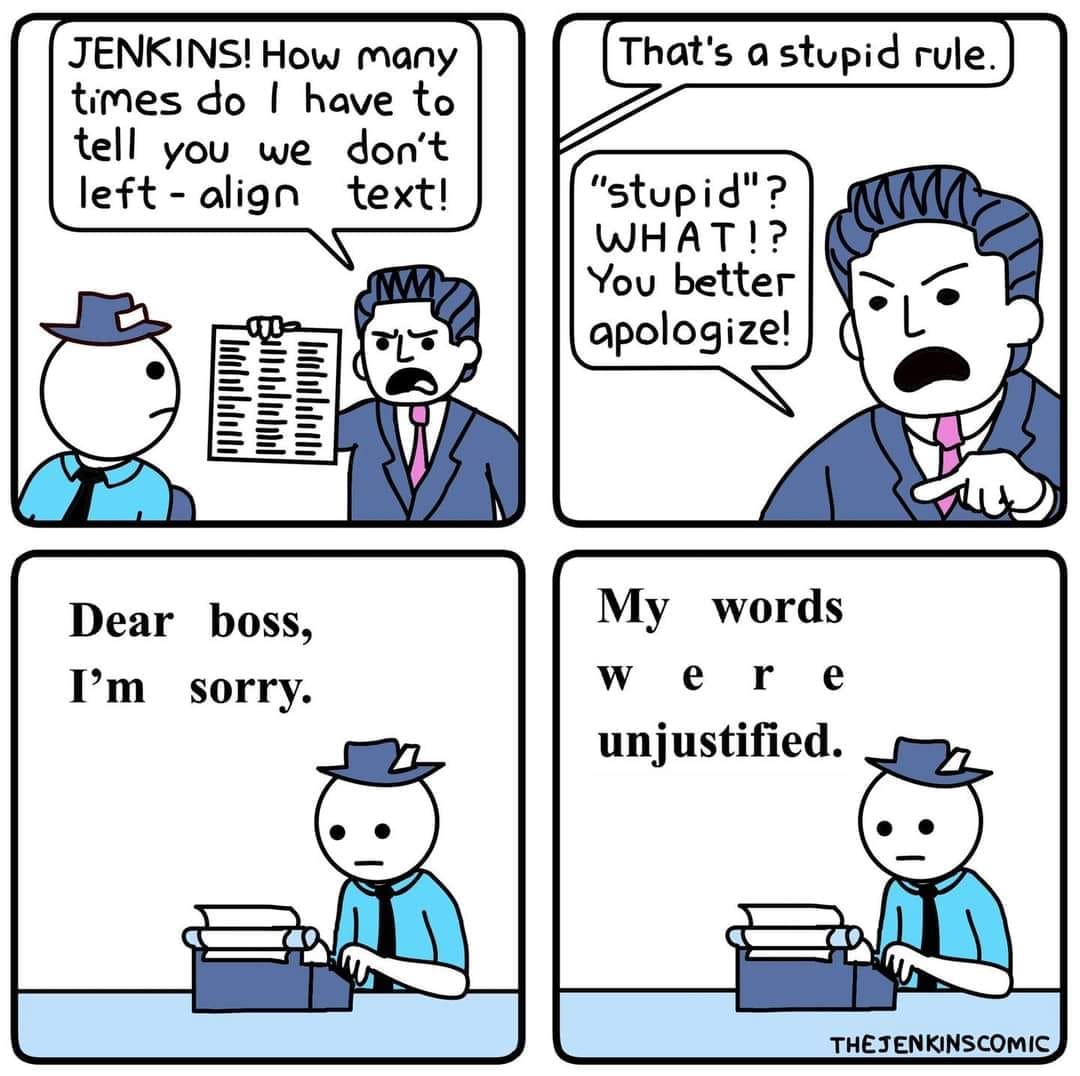
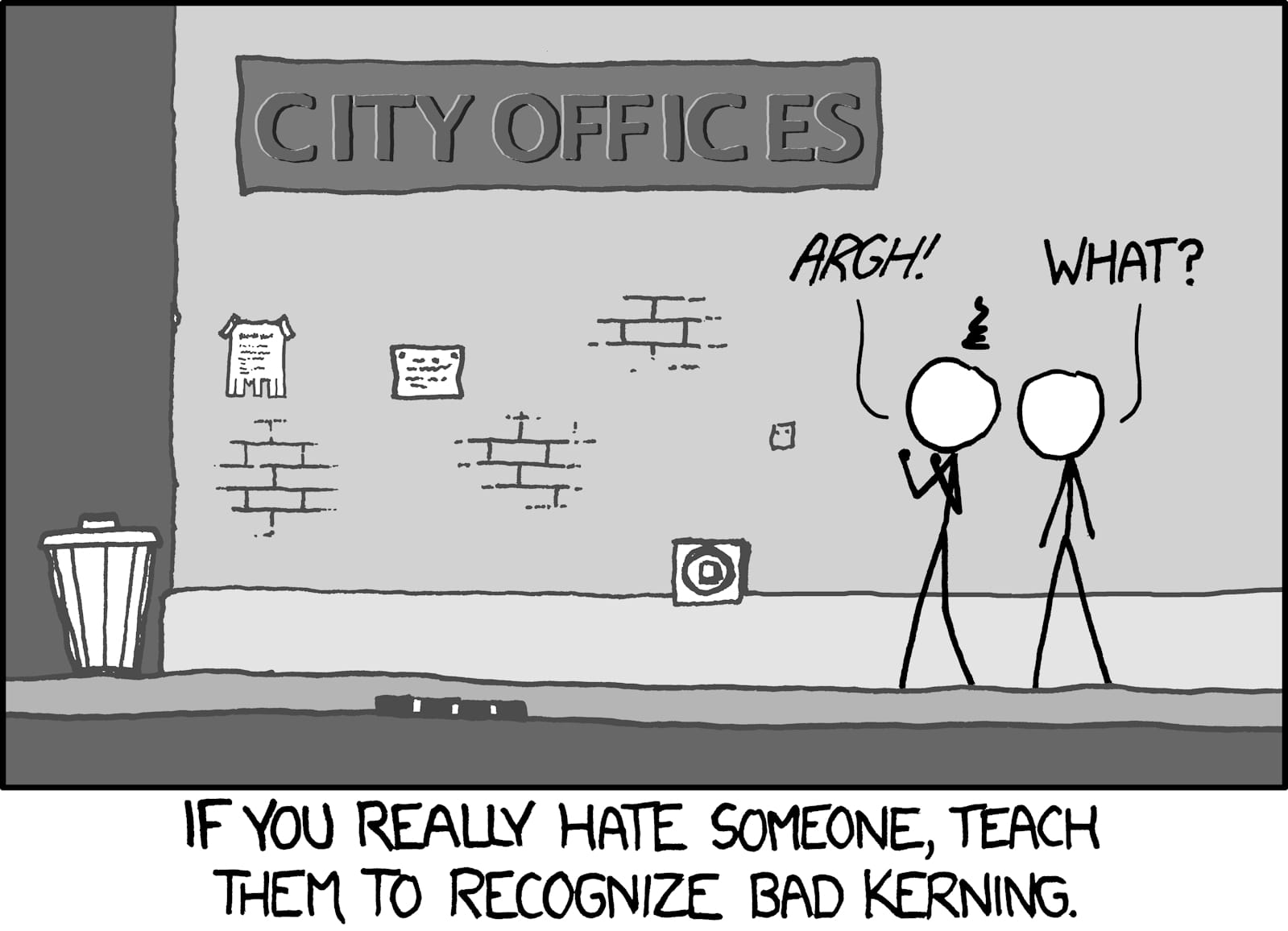
Writing It Off
Calligraphy is another discipline ripe for the cartoonist's pen.
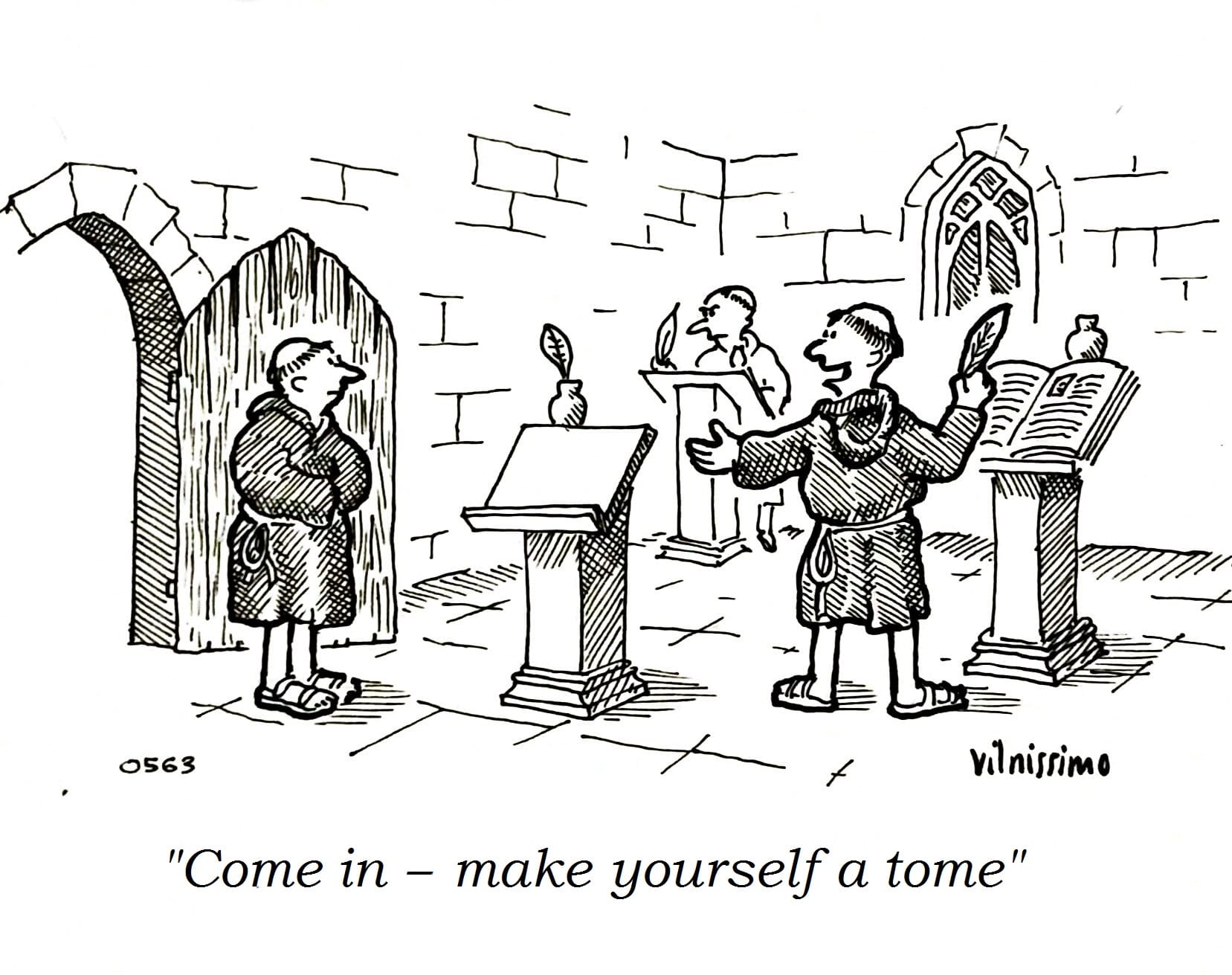

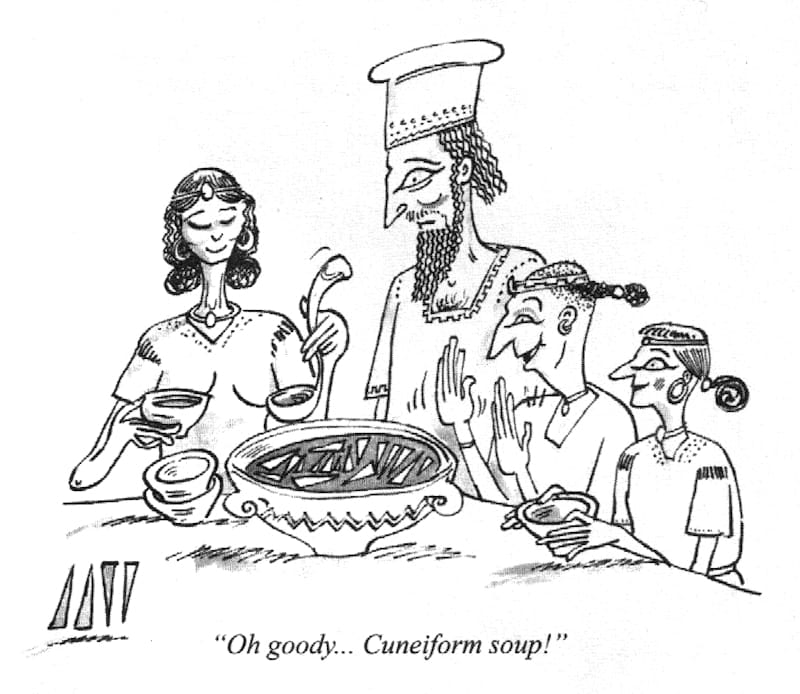
The Last Signwriter
Here's a prophecy that only partially came true. To create 'The Last Signwriter', Steven Jackson added the branding of the early Gerber vinyl cutting machine to the original illustration by Virgil Finlay.
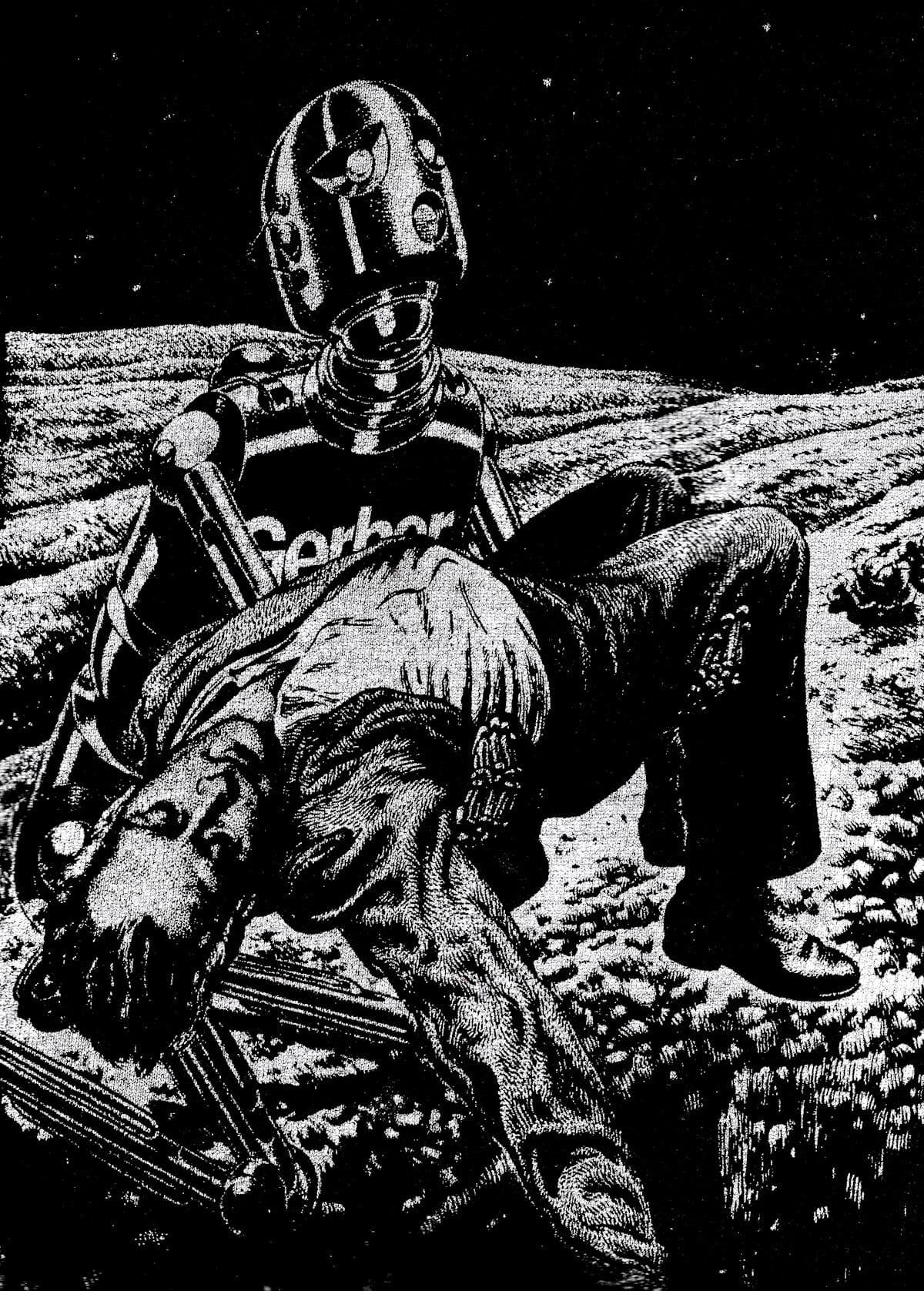
Time Out
After all that smiling / chuckling / laughing, you're probably in need of a rest like this sign painter on the cover of The Saturday Evening Post.
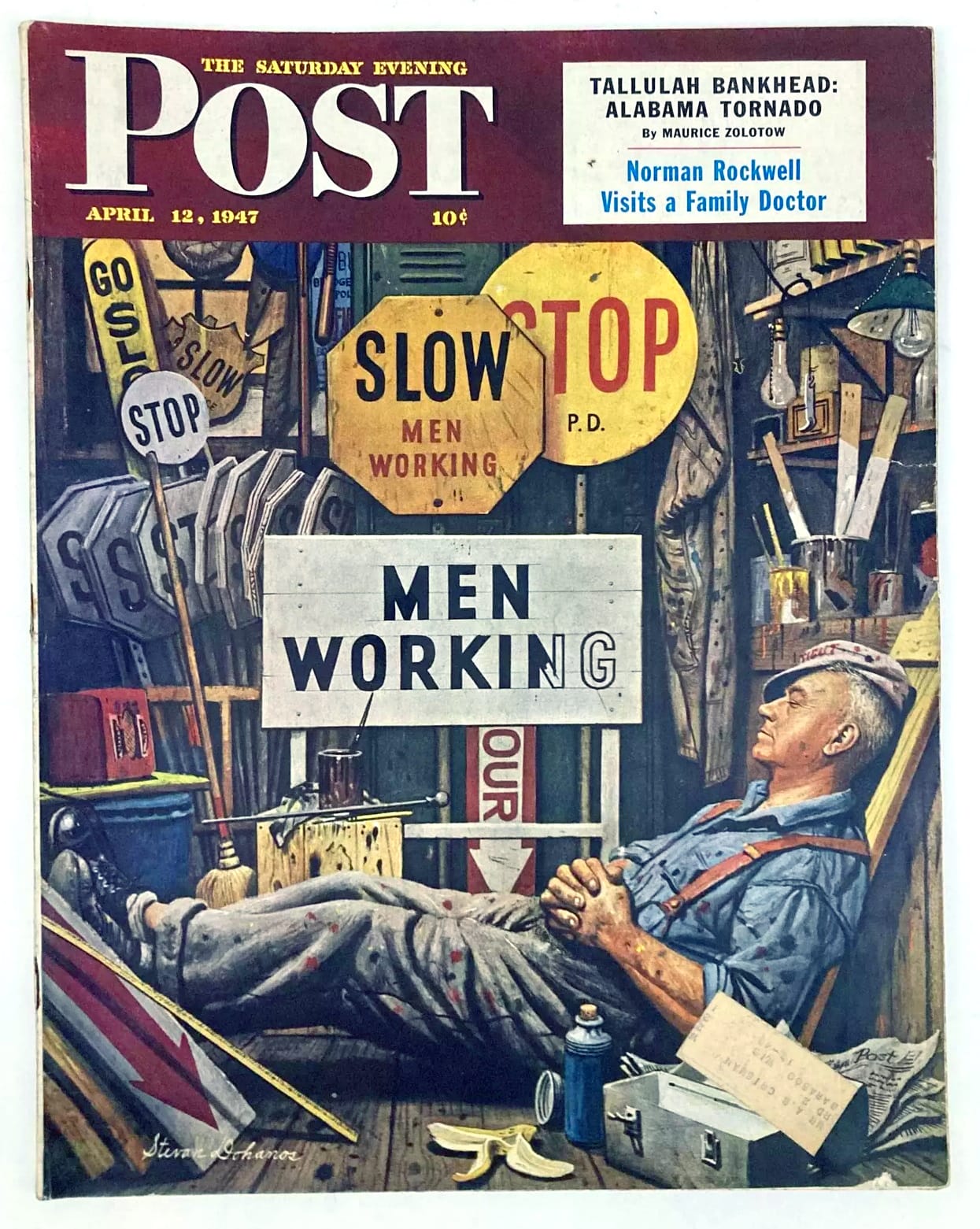
That's All Folks!
And remember, I.O.A.F.S.

More Sign Game

